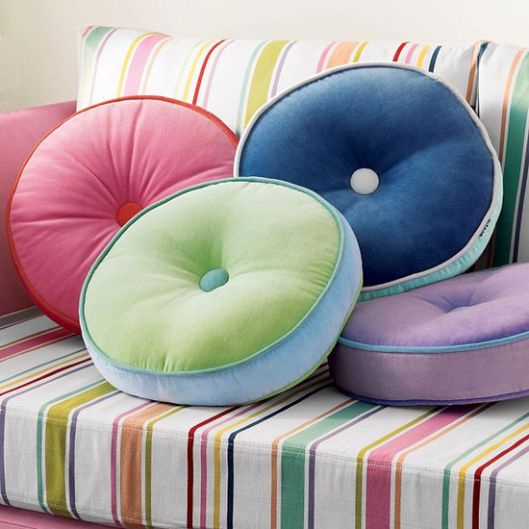In the realm of educational tools, one overlooked but remarkably impactful resource is the humble cushion. While associated with comfort and relaxation, children’s cushions have transcended their conventional role to become powerful aids in enhancing learning experiences for kids. From promoting sensory exploration to fostering creativity and concentration, these versatile cushions have found their place in classrooms, homes, and therapeutic settings worldwide.
The concept of educational cushions revolves around integrating sensory stimuli into learning environments. By incorporating various textures, colours, and shapes into their design, these cushions engage multiple senses simultaneously, providing children with a rich sensory experience that enhances their cognitive development.
- Sensory Exploratory Benefits
The primary benefit of children’s cushions lies in their ability to promote sensory exploration. With their tactile surfaces and interactive features, these cushions encourage kids to touch, manipulate, and explore, stimulating their sensory receptors and fostering sensory integration. For children with sensory processing issues or developmental delays, this hands-on approach can be instrumental in improving sensory processing skills and promoting self-regulation.
- Versatile Learning Tool
Educational cushions serve as versatile tools for promoting learning across various subjects and age groups. In early childhood education, cushions adorned with letters, numbers, or shapes can facilitate hands-on learning activities reinforcing foundational concepts. Teachers may use cushions with alphabet prints to engage preschoolers in letter recognition games or arrange cushions in numerical order to introduce basic maths concepts.
- Social-emotional Development
Beyond academic subjects, children’s cushions support social-emotional development. Group activities that involve sharing cushions or collaborating on building structures promote teamwork, communication, and empathy among children. The soft and inviting nature of cushions creates a comforting environment where children feel safe to express themselves and explore their emotions freely.
- Educational and Physical Development
In addition to their educational benefits, children’s cushions are valuable tools for promoting physical activity and gross motor skills development. Soft cushions with varying shapes and sizes can be used for balance and coordination activities, like walking or jumping from one cushion to another. These activities not only strengthen core muscles but also improve spatial awareness and proprioception, essential skills for physical development.
- Used for Therapeutic Treatments
The versatility of children’s cushions extends beyond traditional educational settings, finding applications in therapeutic interventions as well. Occupational therapists incorporate cushions into sensory integration therapy sessions to help children regulate their sensory experiences and develop coping strategies for sensory challenges. Cushions with weighted inserts or textured surfaces can provide tactile stimulation and proprioceptive feedback for children with sensory processing disorders or autism spectrum disorders.
- Promote Relaxation and Comfort
Children’s cushions have proven to be invaluable tools for promoting relaxation and stress relief in educational and therapeutic settings. The soft, plush texture of cushions creates a calming sensory experience that helps children unwind and refocus their attention. Incorporating cushions into mindfulness activities or quiet corners within classrooms provides children with a peaceful retreat where they can recharge and reset during busy school days.
- Support Diverse Learning
As the demand for inclusive educational practices continues to grow, children’s cushions have emerged as essential resources for supporting diverse learning needs. Their adaptability and accessibility make them suitable for children of all abilities, including those with physical disabilities or sensory sensitivities. By providing a sensory-rich environment that caters to individual preferences and learning styles, cushions empower every child to participate in the learning process and reach their full potential.
- Customisable Sensory Input
Collaborative efforts between educators, designers, and therapists have led to the development of specialised cushions that address specific learning goals and sensory needs. For example, cushions with adjustable inflation levels provide customisable sensory input, allowing educators to cater to individual preferences and sensitivities.
- Increases Engagement and Participation
Integrating technology into children’s cushions opens up a world of interactive learning opportunities. Smart cushions equipped with sensors or embedded devices can provide real-time feedback, track progress, and adapt activities based on individual performance. These interactive features not only enhance engagement but also encourage active participation and self-directed learning.
Whether used as versatile teaching aids, therapeutic tools, or innovative learning platforms, children’s cushions shape the landscape of education, offering endless possibilities for exploration, discovery, and growth.
Exploring the world of educational cushions is crucial as it unlocks diverse learning modalities, fosters sensory exploration, and promotes inclusive education. These cushions serve as versatile tools for enhancing cognitive, social-emotional, and physical development, catering to the unique needs of every child and enriching their educational journey.
- Conclusion
The world of educational cushions offers a wealth of opportunities for enhancing learning experiences and promoting holistic child development. From sensory exploration and academic reinforcement to social-emotional growth and therapeutic support, these versatile cushions play a multifaceted role in educational settings. By harnessing the power of sensory stimulation, tactile engagement, and inclusive design, children’s cushions pave the way for immersive, engaging, and enriching learning environments where every child can thrive.


No comments yet